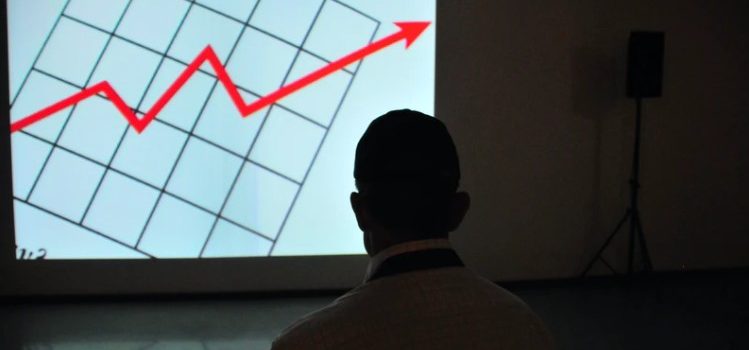

This article is an excerpt from the Shortform book guide to "Early Retirement Extreme" by Jacob Lund Fisker. Shortform has the world's best summaries and analyses of books you should be reading.
Like this article? Sign up for a free trial here.
Would you like to work less and enjoy life more? How can you put your money to work for you instead of the other way around?
In Early Retirement Extreme, Jacob Lund Fisker teaches you how to invest your savings and become financially self-sufficient for life. He shares two tips: Educate yourself on investing strategy, and pick investments based on the work you prefer.
Read on to learn how to live off your investments and start enjoying the early retirement lifestyle.
How to Live Off Your Investments
After saving 75% of his income for just five years of salaried work, Fisker permanently retired at age 33. To retire as quickly as you can, as he did, all you have to do is save enough money that the fund and investment returns cover your annual expenses for the rest of your life. Fisker discusses why investing your savings is safer than other paths to financial freedom, and he shares his advice on how to live off your investments.
Given how unpredictable the economy is—in particular, the rate of inflation and performance of your investments—it’s impossible to know with 100% certainty how much money will be enough to last the rest of your life.
As a ballpark estimate that discounts these factors, Fisker assumes a 3% annual return on investment and asserts that if you accumulate a fund that’s 34.33 times your annual expenses, you can retire and live off the investment returns forever. This is because you need enough that a 3% return covers your annual expenses, plus a year’s worth of expenses to spend while your investments earn money (33.33 + 1 = 34.33).
| How Much Do You Really Need to Retire? In the FIRE community, the most popular way to calculate how much you need to save before retirement is the 4% Rule: When your annual expenses are 4% of your total retirement fund, you can retire and survive by withdrawing 4% of that fund every year. FIRE adherents draw this number from a 1998 paper known as the “Trinity Study,” the most popular historical analysis of various hypothetical investment portfolios. Unlike Fisker’s 3% estimate, this model takes inflation and varying investment returns into account. The Trinity Study determined that at any point since 1929, someone retiring with a fund big enough to support a withdrawal rate of 4% had an extremely low chance of running out of money over the course of a 30-year retirement. Thus, if history repeats itself, a 4% withdrawal rate—or, in other words, a fund 25 times your annual expenses—is a safe bet. You may assume that if you want an early retirement that lasts longer than 30 years, the Trinity Study doesn’t apply and you’ll need to save more. However, some experts argue that a fund allowing for 4% withdrawals still has a good chance of lasting indefinitely. This is true for a number of reasons: If you receive social security payments, they’ll help your fund last. Also, annual expenses often naturally decrease with age, giving you more financial wiggle room. Finally, if you retire early, you may end up earning money with a hobby or business you pursued for fun. |
You might worry that if all your savings are in investments, you risk losing everything in a major economic downturn. However, Fisker assuages this fear, arguing that, if your investments have fallen enough to ruin your retirement, it’s likely that the entire economy has sunk into an unprecedented depression. If this were to happen, your remaining savings would still leave you more secure than traditional workers who depend on their wages as their only source of income, as businesses would collapse, unemployment would skyrocket, and jobs would become extremely scarce and competitive.
(Shortform note: What could cause the kind of economic collapse Fisker describes? For Americans, one possibility is that the United States could default on its national debt. If this happened, global confidence in the US’s financial system would plummet, along with the value of the American dollar. With less purchasing power, the demand for consumer goods would drop, causing businesses to slow production or shut down. Jobs in construction and manufacturing would be the first to disappear, as these industries are the most sensitive to changing consumer demand. However, if you still had savings, as Fisker asserts you would, you could profit as the dollar drops in value by investing in foreign stock markets or commodities.)
We’ve established that investing your savings is the safest path to total financial freedom. But how do you invest your savings well? Here are Fisker’s tips.
Tip #1: Educate Yourself on Investing Strategy
Fisker recommends learning the foundational principles of investing rather than blindly trusting the financial advice of others when choosing your investments. By personally understanding the principles at work, he says you can significantly reduce the risk of any investment and greatly increase your returns.
The more money you’ve accumulated and invested, the more time you should spend learning how to manage it. Since smarter decisions earn you more money as your fund size increases, educating yourself on investing strategy will eventually become more profitable than any other way you could spend your time.
| Counterpoint: Don’t Bother Becoming an Investing Expert In I Will Teach You to Be Rich, Ramit Sethi offers a counterpoint to Fisker, arguing that the stock market is so complex and unpredictable that it’s extremely difficult to create a fund that grows faster than the economy at large, no matter how much expertise you have. As evidence, he asserts that if you inspect the data, mutual fund managers only beat the market around 25% of the time. Whereas Fisker writes that the time you spend educating yourself becomes more profitable as your fund grows, Sethi contends that active fund management often results in losing money through trading fees. Thus, instead of becoming an investing expert, Sethi recommends creating an automated investment system in which you choose a few simple funds to invest in, set up automatic monthly contributions, and walk away. |
Tip #2: Pick Investments Based on the Work You Prefer
The specific assets you invest in should depend on how you like to spend your time, according to Fisker. A day you spend researching the most promising commodities will look very different from one you spend working closely with a tech startup as an angel investor. Research various investments and choose whatever interests you most.
(Shortform note: If the types of investments that interest you the most aren’t registered with the Securities and Exchange Commission, you must become an accredited investor before you’re legally allowed to invest. This law seeks to protect casual investors from the potentially catastrophic financial risks inherent in complex investments like venture capital or hedge funds. You automatically become an accredited investor if you earn over $200,000 a year or have a net worth of more than $1 million.)
Exercise: Make Progress Toward Early Retirement
According to Fisker, to retire early you need to invest your savings. Think about how you might make progress toward this goal. What kind of investing interests you the most, and why? What’s a step you could take to educate yourself about this kind of investing? For example, if you like the idea of investing in real estate, you could search online for free courses on the subject.

———End of Preview———
Like what you just read? Read the rest of the world's best book summary and analysis of Jacob Lund Fisker's "Early Retirement Extreme" at Shortform.
Here's what you'll find in our full Early Retirement Extreme summary:
- How the modern world lures us into giving away our freedom
- How you can permanently retire in your 30s
- Three tips for minimizing your cost of living






